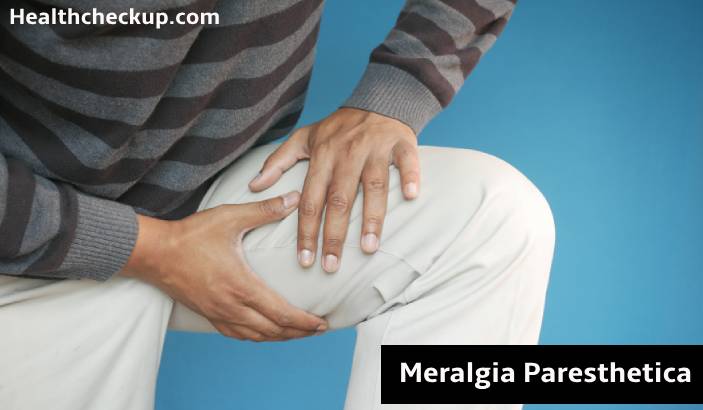Meralgia paresthetica is a neurological condition that affects the outer thigh and can lead to discomfort and pain in the affected area. This article will delve into the causes, symptoms, and management of meralgia paresthetica, as well as addressing concerns about its potential dangers.
What is Meralgia Paresthetica?
Meralgia paresthetica is a medical condition characterized by tingling, numbness, and pain in the outer thigh. It occurs when the lateral femoral cutaneous nerve, which provides sensation to the outer thigh, becomes compressed or entrapped. This condition can be quite uncomfortable, and understanding its causes and symptoms is crucial for those affected.
Causes of Meralgia Paresthetica
- Compression of the Nerve: The most common cause of meralgia paresthetica is the compression of the lateral femoral cutaneous nerve. This can happen due to various reasons, such as wearing tight clothing, obesity, or even carrying heavy items on the waist. In some cases, it can be caused by nerve entrapment within the pelvis.
- Pregnancy: Some women experience meralgia paresthetica during pregnancy due to increased pressure on the pelvic region. The condition usually resolves after childbirth.
- Diabetes: People with diabetes are more susceptible to nerve-related issues, including meralgia paresthetica.
- Injury: Trauma or injury to the hip or thigh area can also lead to this condition.
Symptoms of Meralgia Paresthetica
Meralgia paresthetica is characterized by several distinct symptoms, including:
- Burning or Tingling Sensation: Patients often experience a burning or tingling sensation on the outer thigh.
- Numbness: Numbness in the affected area is common, and it extends down to the knee.
- Pain: Patients experience shooting or aching pain in the outer thigh, which can range from mild to severe.
- Sensitivity: The skin on the outer thigh can become more sensitive, and even light touch can cause discomfort.
- Worsening with Activity: Symptoms worsen with activities like walking, standing, or wearing tight clothing that puts pressure on the nerve.
- Relief with Rest: Rest or changes in position provide temporary relief from the symptoms.
Diagnosis and Evaluation
To diagnose meralgia paresthetica, healthcare providers typically perform a thorough physical examination and inquire about the patient’s medical history. Additional tests, such as nerve conduction studies or electromyography (EMG), is conducted to evaluate the extent of nerve damage and rule out other potential causes of symptoms.
Meralgia Paresthetica Stretches
Physical therapy and stretching exercises can be an essential part of managing meralgia paresthetica. Specific stretches can help alleviate symptoms by reducing tension on the affected nerve. A few stretches that can be helpful include:
- Quad Stretch: Standing and using a support for balance, bend your knee and pull your heel towards your buttocks. Hold for 15-30 seconds and repeat on both legs.
- Iliotibial Band Stretch: Stand with your unaffected leg crossed behind the other. Lean towards the side of the affected leg to stretch the iliotibial band.
- Pelvic Tilt: Lie on your back with your knees bent. Tighten your abdominal muscles to flatten your lower back against the floor, hold for a few seconds, and release.
- Gluteal Stretch: Sit with your legs extended and cross the affected leg over the other. Gently pull the knee of the affected leg toward your chest.
Meralgia Paresthetica Sleeping Position
The way you sleep can have a significant impact on the discomfort caused by meralgia paresthetica. Here are some tips for finding a comfortable sleeping position:
- Back Sleeping: Sleeping on your back with your legs straight helps reduce pressure on the affected nerve.
- Pillow Support: Placing a pillow under your knees can help maintain a neutral spine position and relieve pressure on the nerve.
- Avoid Tight Pajamas: Wearing loose-fitting pajamas can prevent added pressure on the outer thigh.
- Change Positions: If sleeping on your back becomes uncomfortable, try sleeping on your unaffected side with a pillow between your knees for support.
Is Meralgia Paresthetica Dangerous?
Meralgia paresthetica is typically not considered a dangerous condition. It is more often a source of discomfort and inconvenience rather than a threat to overall health. However, severe or prolonged symptoms can impact a person’s quality of life. If left untreated, it leads to chronic discomfort and mobility issues. In rare cases, complications such as nerve damage can occur if the underlying cause is not addressed.
Therefore, it is essential to seek medical attention for an accurate diagnosis and appropriate treatment.
Treatment and Management
Treatment for meralgia paresthetica primarily focuses on relieving symptoms and addressing the underlying cause. This can include:
- Lifestyle Modifications: Wearing loose clothing, losing weight, and avoiding activities that worsen symptoms can help.
- Medications: Over-the-counter pain relievers or anti-inflammatory medications provide temporary relief.
- Physical Therapy: A physical therapist can provide exercises and stretches to alleviate symptoms.
- Nerve Blocks: In some cases, nerve blocks are used to alleviate pain.
- Surgical Intervention: Rarely, when other treatments are ineffective, surgery is done to release the trapped nerve.
Conclusion
Meralgia paresthetica is a condition that can cause discomfort and pain in the outer thigh. It is usually not considered dangerous, but it can significantly impact one’s quality of life. By understanding the causes, symptoms, and management options, individuals with meralgia paresthetica can take steps to alleviate their discomfort and improve their overall well-being. If you suspect you have meralgia paresthetica, it is essential to consult a healthcare professional for a proper evaluation and guidance on the best treatment options for your specific case.









